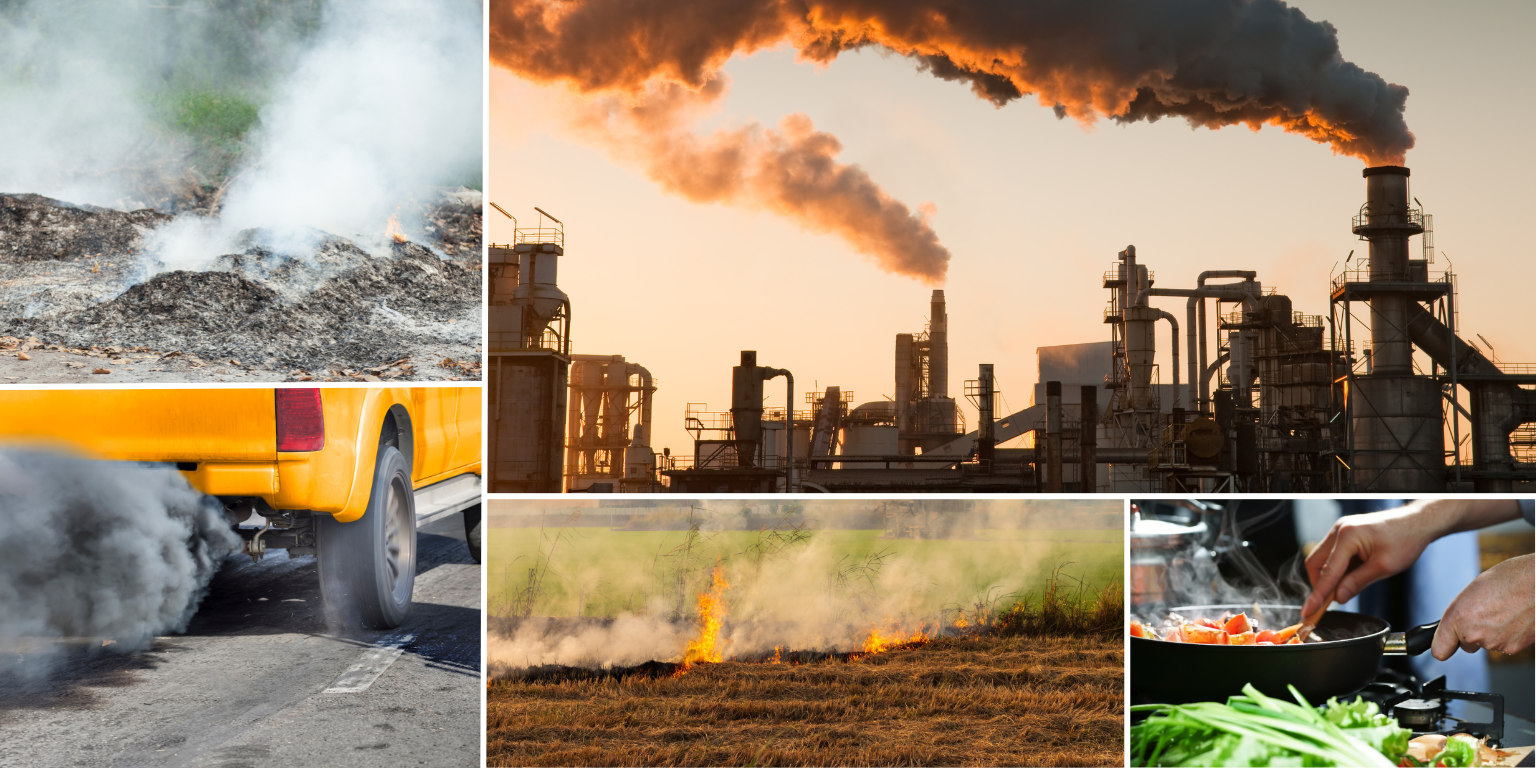Five Sectors Contributing to Air Pollution
By Pratyush Agrawal.
Air pollution is a pressing global environmental issue that poses significant risks to human health, ecosystems, and the planet’s overall well-being. Various respiratory diseases, cardiovascular problems, and even premature death have been associated with exposure to air pollution. There seems no boundary to air pollution as it impacts various sections in society (such as children, older adults, street vendors, drivers, and others). Air pollution is a result of the combination of natural processes and anthropogenic activities. Among the numerous sources of air pollution, certain sectors have been identified as major contributors due to the release of harmful substances into the atmosphere. The following are some of the sectors:

1. Transportation: This sector (roadways, railways, airways, and marine transport) is a significant source of air pollution. The burning of different types of fuels in internal combustion engines releases pollutants such as black carbon (BC), nitrogen oxides (NOx), sulphur dioxide (SO2), particulate matter (PM), carbon monoxide (CO), and volatile organic compounds (VOCs), thereby contributing to smog and poor air quality in cities and larger regions.
2. Energy production and industrial processes: Power plants that burn fossil fuels for electricity generation, as well as various industrial activities, such as manufacturing, chemical production, mining, and construction, contribute significantly to air pollution by releasing pollutants, including SO2, NOx, PM, VOCs, and hazardous air pollutants, into the atmosphere.
3. Residential and commercial emissions: Burning of wood and cow dung and the use of diesel generator sets for heating, cooking, and energy needs can have adverse effects on air quality. These activities release pollutants, including PM, CO, NOx, and VOCs, into the air.
4. Agricultural activities: Unscientific agricultural practices can release various pollutants into the air, mainly through livestock, crop burning, and the use of fertilisers and pesticides. Emissions from agriculture include ammonia, methane, nitrous oxide, and PM, which can contribute to air pollution.
5. Dust and solid waste burning: Dust, particularly road dust, resuspended dust by vehicular movement, construction dust, and wind erosion, adds to the PM in the atmosphere. It contains various pollutants, including heavy metals, BC, and organic compounds. Moreover, uncontrolled burning of solid waste, such as municipal and landfill waste, releases harmful pollutants into the air, including PM, CO, NOx, SO2, and VOCs.
However, it is important to note that the contribution of these sectors to air pollution can vary depending on regional factors, industrial practices, and emission control measures in place.
The author is an Analyst at the Air Pollution Domain at the Center for Study of Science, Technology and Policy (CSTEP), a research-based think tank.
Register for ICAS here: ICAS 2023 (cstep.in)
We are on Twitter, LinkedIN, Instagram, and Spotify as well. Subscribe and follow us on these channels to stay updated on the latest developments at CSTEP.
Got any questions for us? Mail us at cpe@cstep.in
